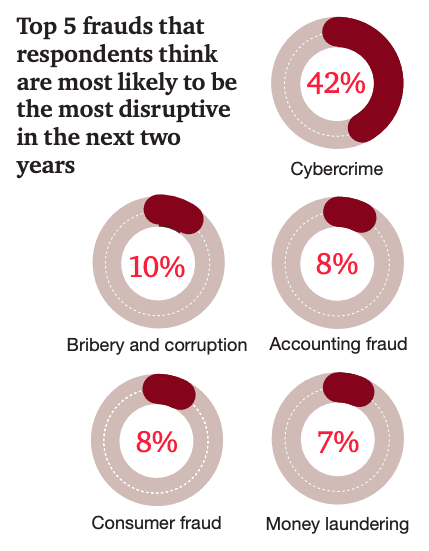Even if you’re flushed with success at the moment, you could still benefit from refining your current processes using one of many tools and software available to you
Is your business at risk of being left behind in this increasingly competitive digital age? Are you failing to meet the heightened expectations of the modern consumer? Even if you’re flushed with success at the moment, you could still benefit from refining your current processes using one of many tools and software available to you.
In this blog post, I’ve compiled summaries of some of the best upgrades you can make this year. Used correctly, they’ll equip you to better deal with the day-to-day running of a business, help you satisfy existing customers, secure new leads and cut costs.
This post isn’t solely aimed at anachronistic businesses who need to make wholesale changes to enter the 21st century. With the speed of technological evolution more rapid than ever, even comparatively new companies can effectively modernize one or more of their systems.
Adapt or die. Read on to learn more about leveraging digital technologies for the betterment of your business.
Start protecting yourself against cyber attacks
You might believe that online security operations are only necessary for governments and nation-states, but every single one of us is vulnerable to damaging cyber-attacks, which occur daily on an industrial scale. If you’re a business owner, you need to immunize yourself against the latest threats, which may harm not only your company but also your customers.
A survey by PricewaterhouseCoopers indicates that cybercrime is the fastest-growing economic crime, with over half of British organizations admitting that they expect to be a victim in the next two years. Believe it or not, cybercrime has now overtaken asset theft as the most commonly experienced fraud, with 49% of UK victims compared to 31% globally. Scary stuff.

Securing networks to safeguard your critical assets and also give consumers peace of mind, is, therefore, an important part of doing business in the modern era. Your security protocol needs to be robust yet agile, able to respond to rapidly evolving risks and attack vectors. Many companies offer 24/7 monitoring and cyber threat assessments, which mean you can quickly learn about and react to anomalous behaviour affecting your business.
Leverage software APIs
You might think that Application Programming Interfaces (APIs) are the primary concern of engineers and data managers, but business owners can certainly leverage them to provoke organizational improvement and achieve both short and long-term objectives.
API implementation can open up fresh monetization schemes too. For instance, if you adopt the freemium model by offering paid plans with increased API calling limits. What’s more, you can use APIs to upsell your high-end products, generate revenue via activities performed by your API and improve operational efficiency.
Using an API lets you regulate the kind of consumer your data faces while controlling the branding they are presented with, as well as influencing the general UX. Salesforce and Expedia are just two companies who have successfully deployed APIs to generate fresh revenue sources.
The value of exposing assets via APIs is underestimated or overlooked by a great many businesses, but with a proper strategy in place, you can take advantage of what is increasingly being dubbed ‘the API economy.’
Upgrade your communications
If you’re keen to improve your interoffice communication while also adding flexibility, enabling you to handle calls and conferences from anywhere on the planet, consider upgrading your current system.

Switching from a landline to an ultra-modern Voice-over-IP (VoIP) service is something many businesses did when cloud computing first took off, and in the interests of streamlining your communication, it’s becoming more and more essential.
With VoIP systems, you can benefit from cheaper calls – the key benefit – but also useful features such as queuing services, auto attendants, countless customizations and add-ons, voice menus, video conferencing, voicemail transcription services, call routing and automatic call recording. Like your current system, VoIP can also cope with a high volume of incoming and outgoing calls: but altogether, they make the process more efficient.
Entrepreneurs constantly on the move will appreciate that some VoIP providers offer functionality via dedicated mobile apps, meaning you can take business calls – from customers or suppliers, for example – when you’re in transit. Of course, this might be superfluous to your needs, in which case a traditional desktop, phone-based VoIP service is what you need. A few VoIP providers also let you integrate third-party apps and extensions like Google Drive and Dropbox.
Whether your business is sales or service oriented, a VoIP system meets your needs around the clock. The only difficulty is deciding which provider to use. Save yourself hours of trawling the web by using a comparison site like GetVoIP. They’ll help you find services that offer end-to-end encryption and behind-the-firewall protection, as well as ones that meet your expectations as far as your budget is concerned.
Enter the cloud
Migrating legacy desktop software to cloud-based architecture is something digital strategists (and pretty much everyone else) have been harping on about for years now. But it’s not mere tub-thumping, because doing so could yield sizeable returns. Once you’re ensconced in that warm, enveloping data cloud in the sky, you’ll know exactly what all the fuss is about.

After you’ve elected to finally react to the endless hectoring and adopt cloud technology, you’ll need to review the various cloud computing options offered by vendors to decide which is suitable for you. Hybrid clouds are just one option and are attractive because they let businesses choose the perfect cloud for their workloads and needs.
If you’re scaling your IT operations or just modernizing from an antiquated system, hybrid clouds from vendors such as IBM and Amazon Web Services help you enhance business continuity, add flexibility to your infrastructure and strengthen security. Hybrid networks also have the added benefit of being able to push essential data via private (rather than public) servers, thereby quickening load times and data transfer speeds.
Of course, hybrid isn’t the only option; you may favour the classic public cloud model, known for its multi-tenant architecture, or the private cloud, which lets you retain control over data and services by protecting it behind a corporate firewall. Weigh up the options, factor privacy and cybersecurity into the equation, and take the plunge. Whatever you do, don’t rush your decision – software database license costs do tend to jump quite a bit when you move applications.
Conclusion
There you have it: four tips and tricks to help you modernize in the coming year. As ever, you should focus your efforts on the areas where you need to improve. Start where you can add most value or eliminate the biggest sinkhole that consistently swallows money and time. Identify those areas of your company that are holding you back and make the necessary changes. Your workflows will improve, and with any luck, so will your revenue.